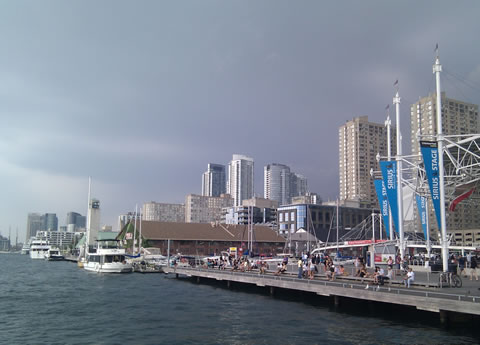When Gabriel Eidelman was growing up in Toronto, he often wondered why the city’s waterfront not only failed to live up to its potential, but languished as a vast expanse of derelict land. “It didn’t make much sense,” observes Eidelman, the Blanche and Sandy van Ginkel Graduate Fellow in political science. His curiosity prompted him to pursue a PhD focused on the gnarled politics of property ownership along Toronto’s sprawling harbourfront, much of which was created from landfill in the early decades of the 20th century.
Delving into decades of competing land use plans, the 29-year-old Eidelman (who will defend his thesis this year) concluded that the deeply fractured ownership structure of Toronto’s post-industrial waterfront has militated against the implementation of a cohesive development plan. In his research, he also demonstrated how this flaw set Toronto apart from comparable waterfront cities, especially Chicago. “The ownership [in Chicago] was settled in 1910 through various lawsuits,” he explains. The result: the windy city emerged with a consolidated land holding and could enact certain development policies, such as the ban on tall buildings at the water’s edge.
Eidelman’s research, though historical, is nothing if not timely. Last fall, Councillor Doug Ford, Mayor Rob Ford’s elder brother, stepped forward with a blue-sky scheme to build a large-format mall, a ferris wheel and a monorail on the city’s 700-acre Port Lands district – an area that’s already been the subject of intensive planning and official plan policies. To Eidelman, the gambit seemed like history repeating itself. “This happens time and time again,” he says, referring to 1960s controversies involving the competing development aspirations of certain waterfront agencies.
In this case, however, the existing development strategy, which has been created and promoted by Waterfront Toronto over several years, survived to see another day, although council has ordered the agency to accelerate its plans. Eidelman cautions that it is too early to tell whether that plan – which calls for a mixed-use community arrayed along a naturalized estuary at the mouth of the Don River – will endure. (City officials insist the funds for the infrastructure don’t exist.) And he warns that the city still hasn’t confronted the ghost in this machine, which is title. “If I were to fix the problem, I would find a way to consolidate land ownership.”
Eidelman presented a summary of his analysis last April. It is available here.






